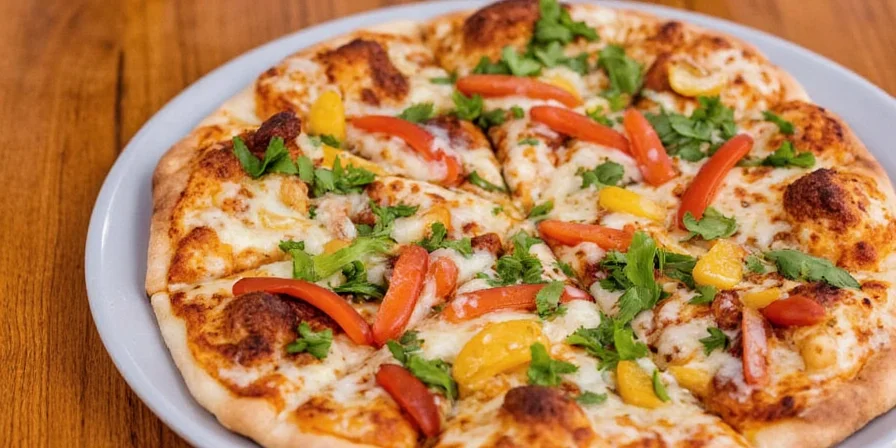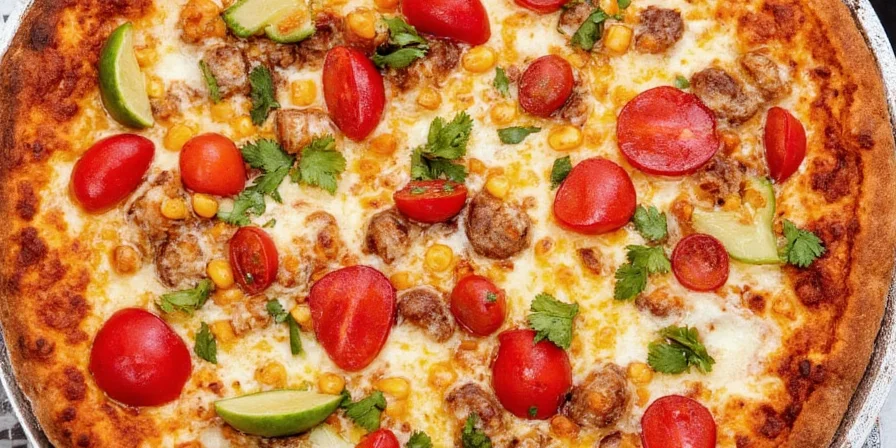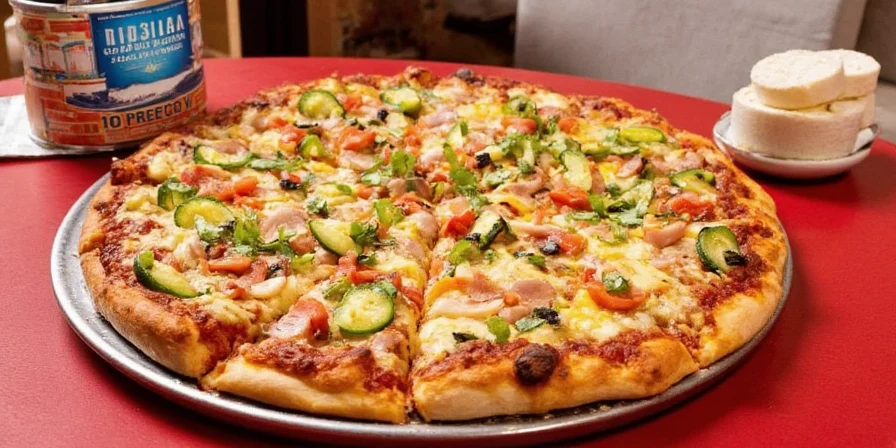Tlayuda Oaxaca: The Mexican Pizza You Never Knew You Needed in Your Life
Imagine a crispy, oversized tortilla topped with beans, cheese, meat, and the freshest salsas you can dream of. Sounds delicious, right? Well, welcome to the world of Tlayuda Oaxaca, Mexico’s flavorful response to pizza—but better!
In this article, we’ll walk you through everything you need to know about Tlayuda Oaxaca—from its origins in southern Mexico to pro tips on how to make it at home (or enjoy it like a local in Oaxaca). And yes, there will be spicy surprises along the way.
Table of Contents
- What is Tlayuda Oaxaca?
- A Taste of History: Origins of the Tlayuda
- Spice Breakdown: Key Ingredients That Make It Shine
- Pro Tips: How to Master the Tlayuda at Home
- Tlayuda vs. Pizza: Battle of the Flatbreads
- Where to Eat the Best Tlayuda in Oaxaca
- Vegan & Veggie Variations: For the Conscious Foodie
- Myth Busting: Common Misconceptions About Tlayudas
- Final Thoughts: Why the Tlayuda Deserves Its Own Food Festival
What is Tlayuda Oaxaca?
If you're picturing a giant tortilla loaded with toppings—good! You’re already halfway there.
The Tlayuda (pronounced “tie-wa-da”) is a traditional dish from the southern state of Oaxaca in Mexico. Known locally as “la comida reina” (the queen of meals), it's a street food staple that’s both hearty and customizable, kind of like the Build-A-Bear Workshop of edible creations—if Build-A-Bear sold spicy pork instead of stuffed animals.

A Taste of History: Origins of the Tlayuda
The roots of the Tlayuda trace back to the Zapotec people, who have inhabited the Oaxaca region for thousands of years. Originally used as portable sustenance for farmers and travelers, the tlayuda was a simple but filling meal made from corn masa, dried and then rehydrated when needed.
Over time, as trade expanded and more ingredients became available, the tlayuda evolved into the modern-day feast we know and love. From a humble base to a canvas for culinary creativity, the tlayuda tells the story of Oaxacan culture—one bite at a time.
Spice Breakdown: Key Ingredients That Make It Shine
Here’s what typically goes into a classic Tlayuda Oaxaca:
- La Base: A large, thin corn tortilla (usually handmade)
- Refried Beans: Smothered evenly across the tortilla
- Oaxaca Cheese: A melty, stringy cheese that brings the goo factor
- Meat Options: Chorizo, tasajo (beef), cecina (cured pork), or choriqueeso (chorizo + queso)
- Salsas: Red or green salsa, often fiery hot and packed with flavor
- Toppings: Cabbage, avocado, cilantro, lime, and crema

Spice Spotlight: Salsas of Oaxaca
| Type of Salsa | Heat Level | Flavor Profile |
|---|---|---|
| Mole Negro | Low | Smoky, sweet, complex with chocolate notes |
| Chilhuacle | High | Earthy, spicy, aromatic |
| Red Tomato Salsa | Medium | Tomato-forward, slightly smoky, tangy |
| Green Tomatillo Salsa | Medium-High | Grassy, zesty, tart |
Pro Tips: How to Master the Tlayuda at Home
You don’t need to fly to Mexico to experience the joy of a Tlayuda. Here’s how to recreate it in your own kitchen:
- Make or buy authentic Oaxacan tortillas: If fresh isn't available, look for large, hand-stretched ones.
- Don’t skip the lard: Traditional refried beans use lard for flavor. Canola oil works too, but your taste buds will notice the difference.
- Cheese matters: Use real Oaxaca cheese if possible—it melts differently than mozzarella.
- Toast the tortilla: A bit of char adds depth. Grill or toast over open flame if you can.
- Layer strategically: Start with beans, add cheese, meat, and then let the heat melt it all together before adding cold toppings like cabbage and crema.

Tlayuda vs. Pizza: Battle of the Flatbreads
Let’s settle this once and for all. Who wins in a face-off between tlayuda and pizza?
| Feature | Tlayuda | Pizza |
|---|---|---|
| Base | Handmade corn tortilla | Wheat dough, yeast-based |
| Origin | Oaxaca, Mexico | Naples, Italy |
| Crunch Factor | Crispy edges, chewy center | Varies (thin/crusty vs thick/soft) |
| Typical Toppings | Beans, meat, cheese, salsas | Tomato sauce, cheese, meats, veggies |
| Spice Level | 🔥 Can be very spicy | 🌶 Usually mild |
Verdict: While both are legendary, the Tlayuda wins points for cultural uniqueness and spice complexity.
Where to Eat the Best Tlayuda in Oaxaca
If you ever visit Oaxaca, skip the chain restaurants and head straight to these spots:
- El Pochote: Known for their tasajo tlayuda and rooftop views.
- Las Golondrinas: A beloved family-run stand near the market.
- Merced Market: Hit up stalls where locals eat—not the tourist zones.
- Tlayudas El Torito: Affordable, massive portions, and packed with flavor.

Vegan & Veggie Variations: For the Conscious Foodie
Who says vegans can’t indulge in a tlayuda? Swap out the meat and cheese for:
- Jackfruit “cecina” (simmered in spices)
- Portobello mushrooms (for a meaty texture)
- Vegan cheese or cashew cream
- Black beans instead of refried
- Add roasted veggies like poblano peppers or squash
These versions not only save the planet—they taste amazing too!
Myth Busting: Common Misconceptions About Tlayudas
Let’s bust some myths floating around about this iconic dish:
- Myth #1: Tlayuda is just a big taco.
- Truth: Nooope! It’s more like a hybrid of a tortilla and a pizza, built for sharing (or eating alone, no judgment).
- Myth #2: You can find real tlayudas anywhere in Mexico.
- Truth: Authentic versions are best found in Oaxaca—like champagne in Champagne.
- Myth #3: All tlayudas are spicy.
- Truth: While many are, you can tone it down by asking for mild salsas or none at all.

Final Thoughts: Why the Tlayuda Deserves Its Own Food Festival
From its ancient roots to its modern-day cult following, the Tlayuda Oaxaca is more than just food—it’s an experience. It’s a celebration of flavor, tradition, and spice, wrapped in a crispy corn shell.
Whether you’re a foodie looking for your next adventure or a spice lover chasing heat, the tlayuda deserves a spot on your culinary bucket list. So go ahead, get messy, embrace the crunch, and fall in love with Oaxaca—one bite at a time.











 浙公网安备
33010002000092号
浙公网安备
33010002000092号 浙B2-20120091-4
浙B2-20120091-4